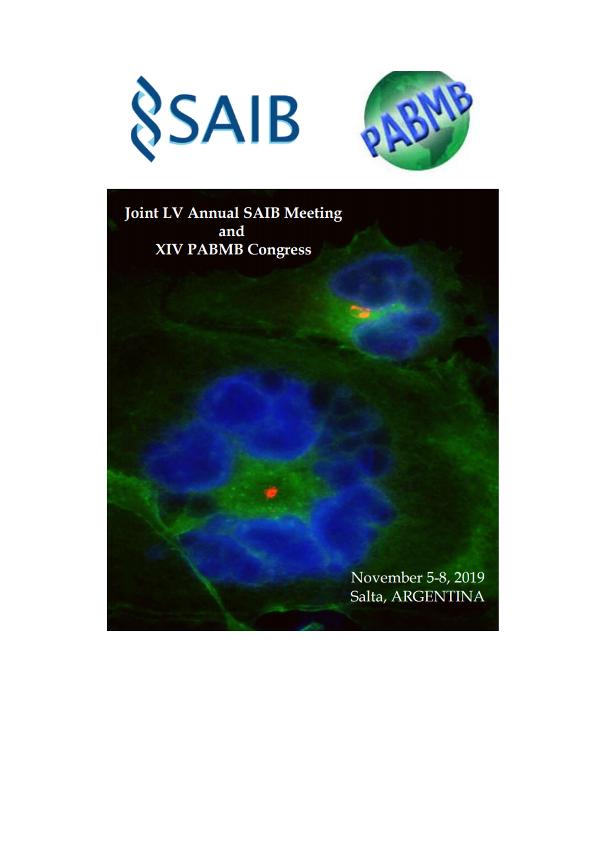Evento
Iron as a multifunctional factor in aspergillus niger mya 135: fungal morphology, lipase production and lipase enhancer
Tipo del evento:
Reunión
Nombre del evento:
The LV Annual SAIB Meeting and XIV PABMB Congress
Fecha del evento:
05/11/2019
Institución Organizadora:
Sociedad Argentina de Investigación en Bioquímica y Biología Molecular;
Título de la revista:
Biocell
Editorial:
Tech Science Press
ISSN:
1667-5746
Idioma:
Inglés
Clasificación temática:
Resumen
Filamentous fungi have been broadly used in biotechnological processes as cell factories due to their metabolic versatility. They are able to secrete high levels of enzymes, antibiotics, vitamins, polysaccharides and organic acids. However, one particular obstacle with this kind of microorganisms focuses on their morphological form. They can show linear filaments to highly branched structures, and in submerged culture growth morphologies varying from compact pellets to dispersed mycelia. In turn, several fungal processes can be directly or indirectly affected. Those growth morphological patterns are generally induced by extracellular factors and accomplished by genetic and biochemical factors. In this connection, we previously reported that FeCl3 decreases the mycelium-bound β-N-Acetyl-D-glucosaminidase activity (a relative marker of the wall lytic potential) from Aspergillus niger ATCC MYA 135 and yields a dispersed mycelium in its presence. Here, both the fungal morphology and the lipase activity obtaining in the presence of an optimized culture medium supplemented with FeCl3 were analyzed. The role of this salt as lipase enhancer was assessed as well. Firstly, the extracellular lipase production was conducted in an orbital shaker at 30 °C during 192 h by using a mineral medium supplemented with 1 g/l FeCl3 and a final conidial concentration of about 105 conidia per ml. After 24 h of fermentation, 2 % (v/v) of olive oil was added as inducer. Thus, the highest specific activity (15.51 ± 0.78 U/mg) was obtained at 96 h of cultivation. This activity value was 10 fold compared with its control without FeCl3 supplementation. Secondly, a new fermentation of 96 h was conducted. The mycelium was examined by scanning electron microscopy displaying clumps structures with scarce ramified hyphae. The supernatant, collected by filtration, was also evaluated as biocatalyst in hydrolytic and synthetic reactions as follow. The role of iron as lipase enhancer was studied in native PAGE by using 1.3 mM of α-naphthyl acetate as substrate. Released naphthol was bound with 1 mM Fast Blue to give a colored product. Preincubation of lipase bands during 30 min in the presence of 0.1 g/l FeCl3 resulted in a significant increase of the activity signal. Additionally, the extracellular lipase activity was immobilized in silica gel by adsorption. The elemental analysis performed under SEM-EDX (Energy-dispersive X-ray spectroscopy) evidenced the presence of iron. This biocatalyst was assayed to produce biodiesel compounds in a solvent-free system using soybean oil and butanol (1:4) as substrates. After a three-stepwise addition of butanol, a biodiesel conversion of 93.36 % was reached. Therefore, it can be concluded that FeCl3 acted by altering fungal morphology, increasing lipase production and improving the performance of enzymatic activity. This research was supported by the following funding sources: FONCYT (PICT 2015-2596) CONICET (P-UE 2016-0012) and UNT (PIUNT D606).
Palabras clave:
LIPASE
,
ASPERGILLUS NIGER
,
BIODIESEL
Archivos asociados
Licencia
Identificadores
Colecciones
Eventos(NANOBIOTEC)
Eventos de INSTITUTO DE NANOBIOTECNOLOGIA
Eventos de INSTITUTO DE NANOBIOTECNOLOGIA
Eventos(PROIMI)
Eventos de PLANTA PILOTO DE PROC.IND.MICROBIOLOGICOS (I)
Eventos de PLANTA PILOTO DE PROC.IND.MICROBIOLOGICOS (I)
Citación
Iron as a multifunctional factor in aspergillus niger mya 135: fungal morphology, lipase production and lipase enhancer; The LV Annual SAIB Meeting and XIV PABMB Congress; Salta; Argentina; 2019; 1-2
Compartir




